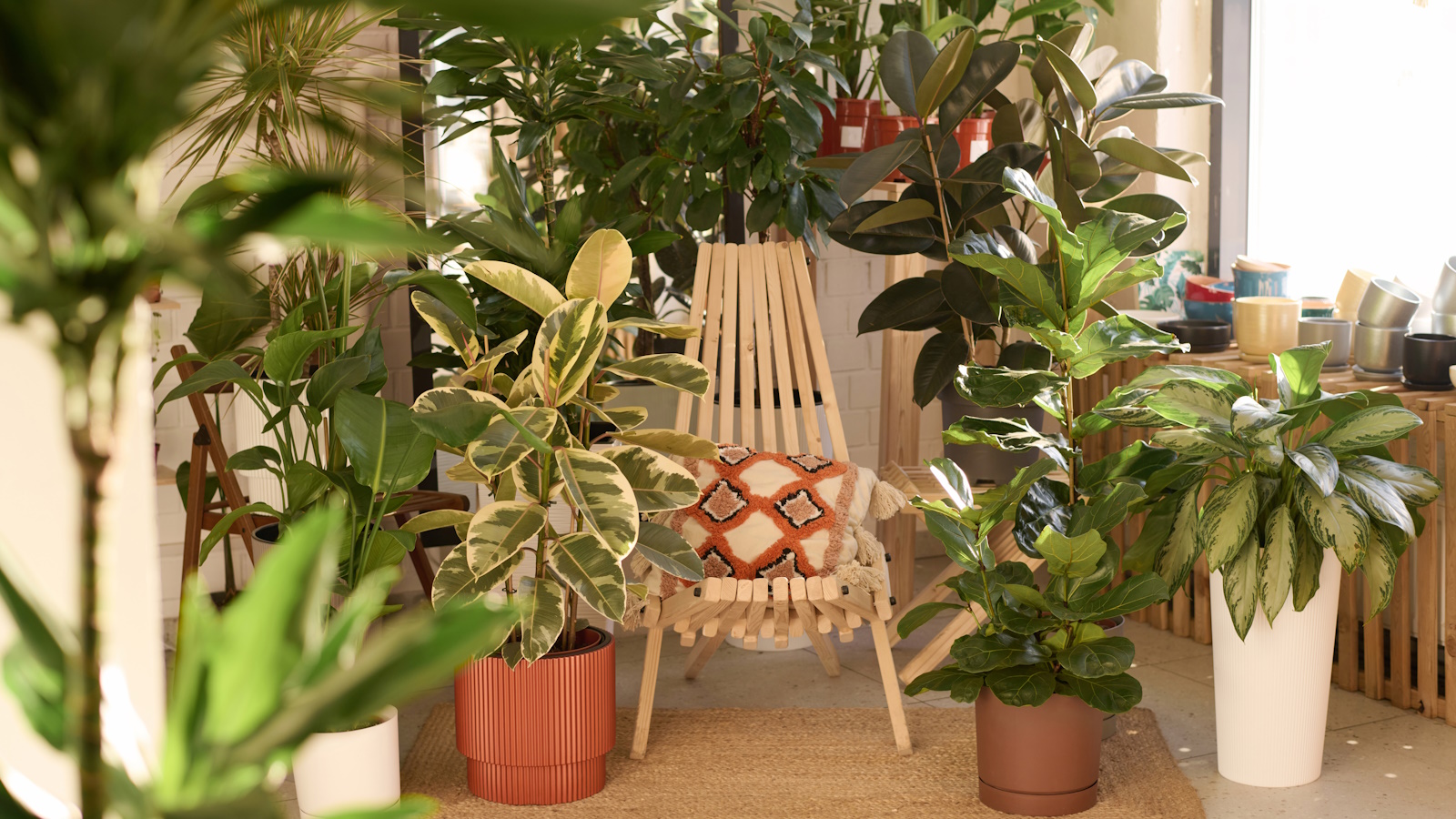
As a self-proclaimed plant parent with a home that increasingly looks like a jungle, I've certainly made my fair few mistakes when learning how to garden indoors and care for houseplants. And we've all been there - watering a little too much and not understanding the right growing conditions for specific plants, among other errors. But that's the joy of being a plant lover; you learn along the way.
Of course, common indoor plant mistakes often lead to attracting common houseplant pests. If you start to notice lots of little black flies around your plants, it's likely you're having the same problem I once had - a fungus gnat infestation. The worst part? These little bugs multiply fast and will soon take up residence in every indoor plant you have if you don't stop them in their tracks.
After researching how to get rid of gnats in plants, I started to make some changes to my indoor plant care regime and it has changed my houseplant game for the better. My indoor garden is now looking the best it ever has and it's been free of gnats ever since. Here's what I learned about optimal indoor plant care when dealing with a houseplant gnat infestation.
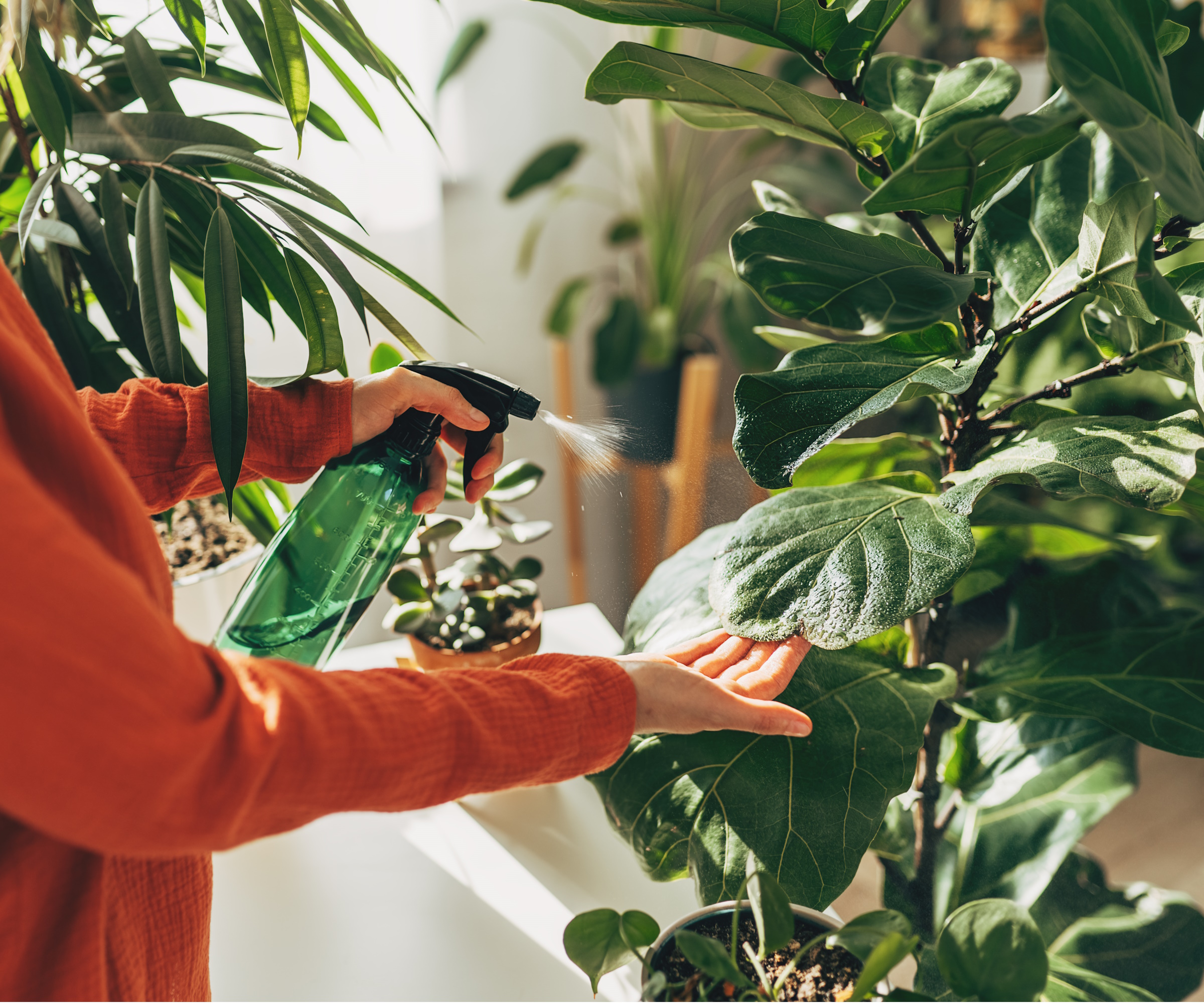
5 ways to get rid of a gnat infestation
Fungus gnats are little black flies that thrive in damp environments. You'll often find them living on the soil of plants that have been overwatered and they quickly multiply by laying eggs in the soil. But don't worry, gnats are generally harmless to you and your plants' health.
As soon as I started to understand how I was creating the perfect place for gnats to live, I was able to adjust my indoor plant care for the better.
1. Always use the right potting mix for your plant

It all starts in the soil, as not every soil type will be right for every plant. For example, growing orchids, which are epiphytic in their natural habitat, requires a very light potting mix that allows for proper drainage and for aerial roots to have access to good airflow.
But what is the best potting soil for indoor plants? It really does depend on the specific requirements of your plant, however you should always be using a well-draining potting mix for potted plants so that excess moisture doesn't become trapped in the container and cause houseplant root rot.
This is where I made my first error. In the excitement of getting new plants set up in my home, I would use quite a dense potting soil that wasn't quite right for each of my plants - especially those that don't like soggy soil, like calatheas. This incorrect potting mix not only created a damp environment for fungus gnats to thrive, but it also caused foliage to turn yellow and curl.
The first thing I did in an attempt to rid my plants of gnats is change out the soil, rinsing roots down before repotting them to get rid of any fungus larvae that may be lurking below soil level. I then sought out well-draining houseplant soil, like this indoor potting mix from Amazon, to ensure my plants wouldn't be sitting in oversaturated soil and could release excess moisture effectively.
'You can also amend your soil with chunky amendments like perlite or pumice to optimize drainage,' notes Vladan Nikolic from Mr. Houseplant.
2. Provide good air circulation for your indoor garden
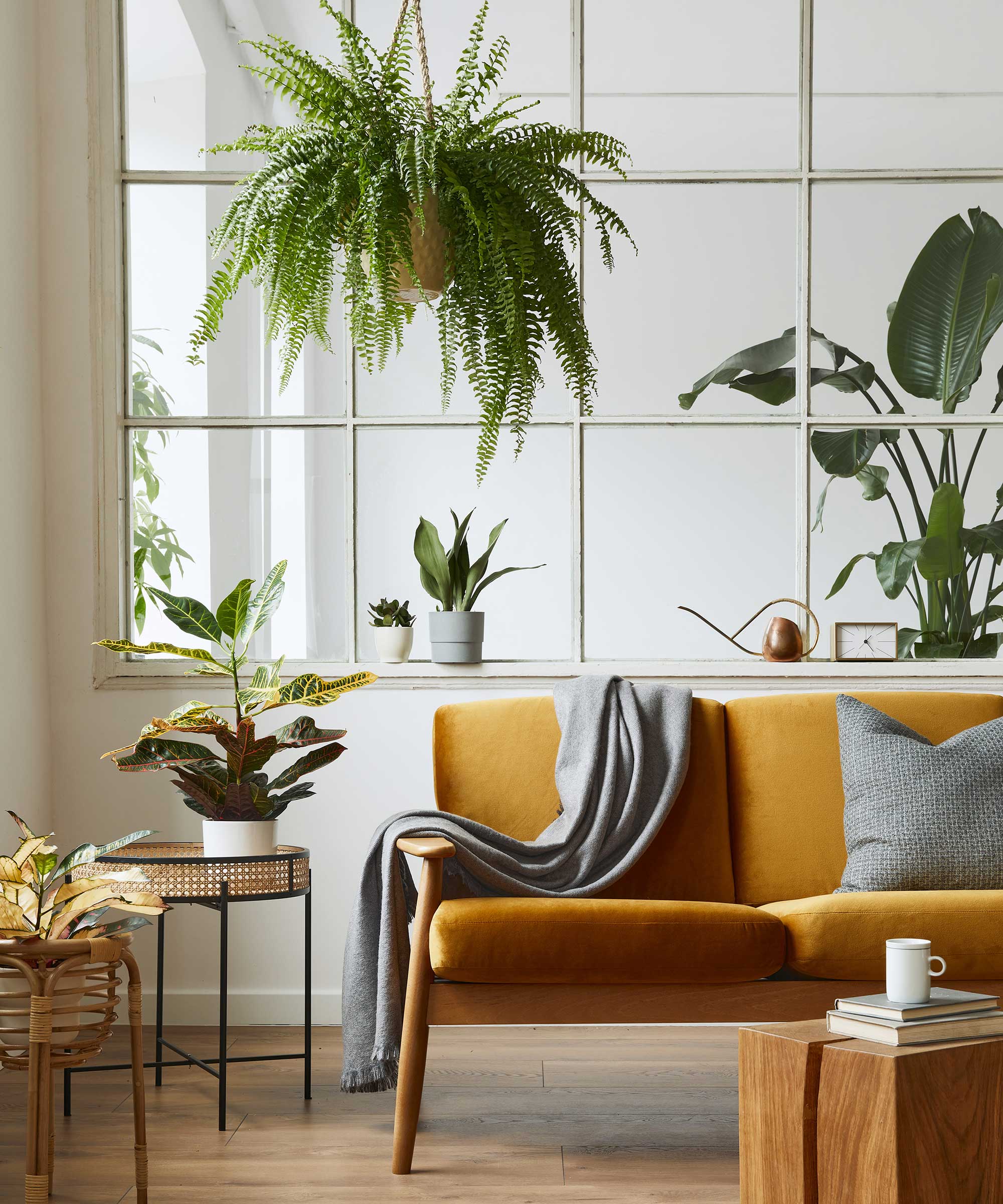
It's a no-brainer that having good air circulation will prevent a damp environment and stop a build-up of fungus and mold in your houseplant soil - things that will attract fungus gnats and other pests.
While it's true that placing houseplants close together can beneficially increase humidity for indoor plants, I also take care to ensure my plants have good air circulation around them by giving them space and regularly opening windows.
'Proper room ventilation is another good preventive measure against gnats. It’ll bring down excess humidity and help the soil dry faster, reducing gnat numbers as a result,' notes Julia Omelchenko, botany expert for the Plantum app.
'Aside from regularly opening your windows, you can also run a fan on low speeds where your plants are situated. Avoid cold drafts and don’t point the fan at the plants,' she adds.
You might want to invest in a fan like this tower fan from Walmart, although it's also worth researching how much it costs to run a fan 24/7 and adjust how long you have your fan on accordingly.
Ensuring my houseplants have good air circulation has also helped to keep larger plants, like my monstera, looking brighter, as my houseplants capture less dust.
3. Allow houseplant soil to dry out to get rid of gnats
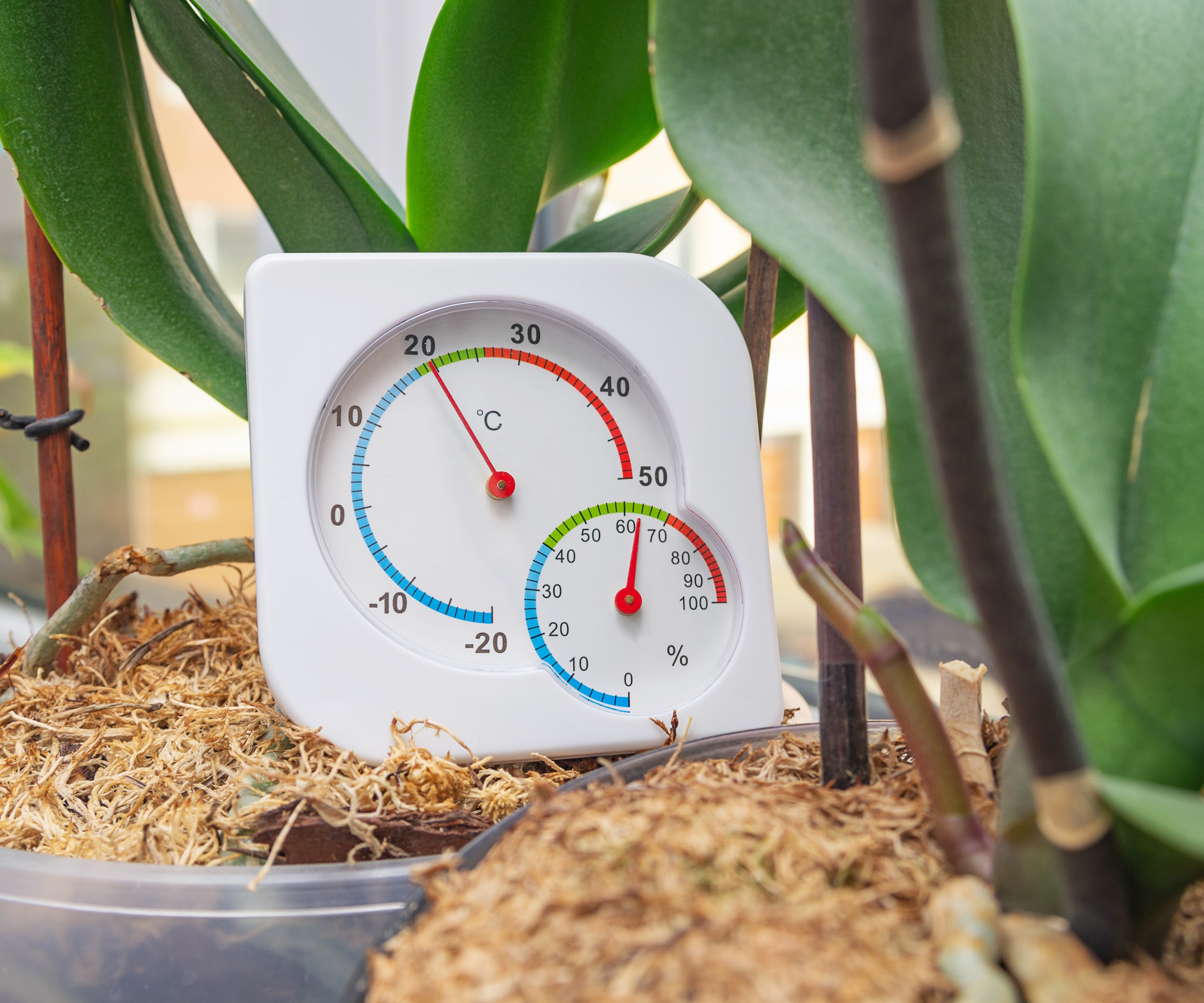
The root of all gnat problems is dampness and incorrect moisture levels in soil, so I learned very quickly that you need to give your plants time to dry out in order to efficiently get rid of a gnat infestation.
This may sound concerning if you are knowledgeable about how to water your houseplants correctly and know that you have particularly thirsty houseplants that don't like to sit in dry soil, however allowing a period of dryness to clean up your gnat problem will leave your plant happier in the long term.
'The first and easiest remedy for a gnat infestation is to allow the soil to dry out. Hold off watering until at least the top half of the soil has dried. Let the soil dry completely if you have succulents,' says Vladan. 'Fungus gnats dislike dry soil, and they can’t survive in dry conditions. To help your plants absorb water faster and speed up soil drying, give your plants more light,' he adds.
I also opt for terracotta indoor planters and pots with drainage holes for my indoor plants, which aids with drainage and speeds up the drying out process. There are plenty of planters like this out there to suit all sorts of interior styles - like these terracotta pots from Amazon.
4. Ditch your set watering schedule
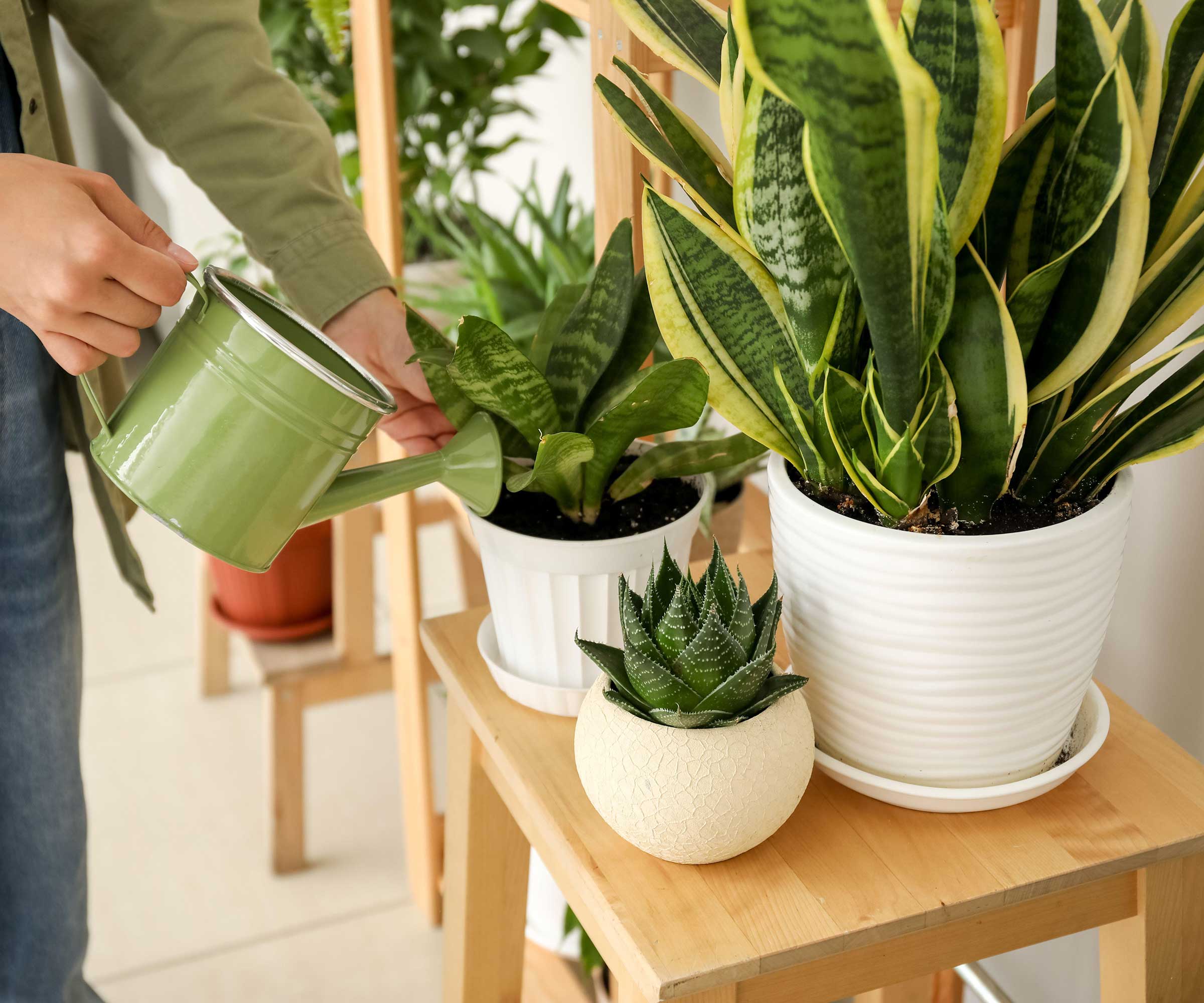
Not only do you need to allow your soil to dry out to get rid of a gnat infestation, but it's also important to improve your watering regime going forward to avoid creating a damp environment again.
Knowing when to water plants is something that took me a little while to master, and every novice houseplant owner will have to tackle the hurdle of becoming familiar with the watering requirements of new plants.
The rule of thumb is to always check your soil before watering your houseplants, as there is no set frequency for every plant. 'The watering frequency depends on plant species and environmental factors, but you should always let at least the top inch of the soil dry out,' notes Vladan.
'Optimal watering is important not only to ensure good plant health but to prevent fungus gnat infestations as well. Water each plant according to its requirements, allowing the topsoil to dry off between watering,' says Julia. 'Check the soil moisture level with your finger or a wooden stick,' she adds.
Before I experienced gnat infestation, I tried establishing a watering schedule - often once a week for most of my plants. Now, I never water my houseplants without a moisture meter - like this soil moisture meter from Amazon. It allows you to check how much of the soil has dried in your plant pot, ensuring you don't top up moisture levels until it's time to.
5. Use sticky fly traps to capture adult gnats
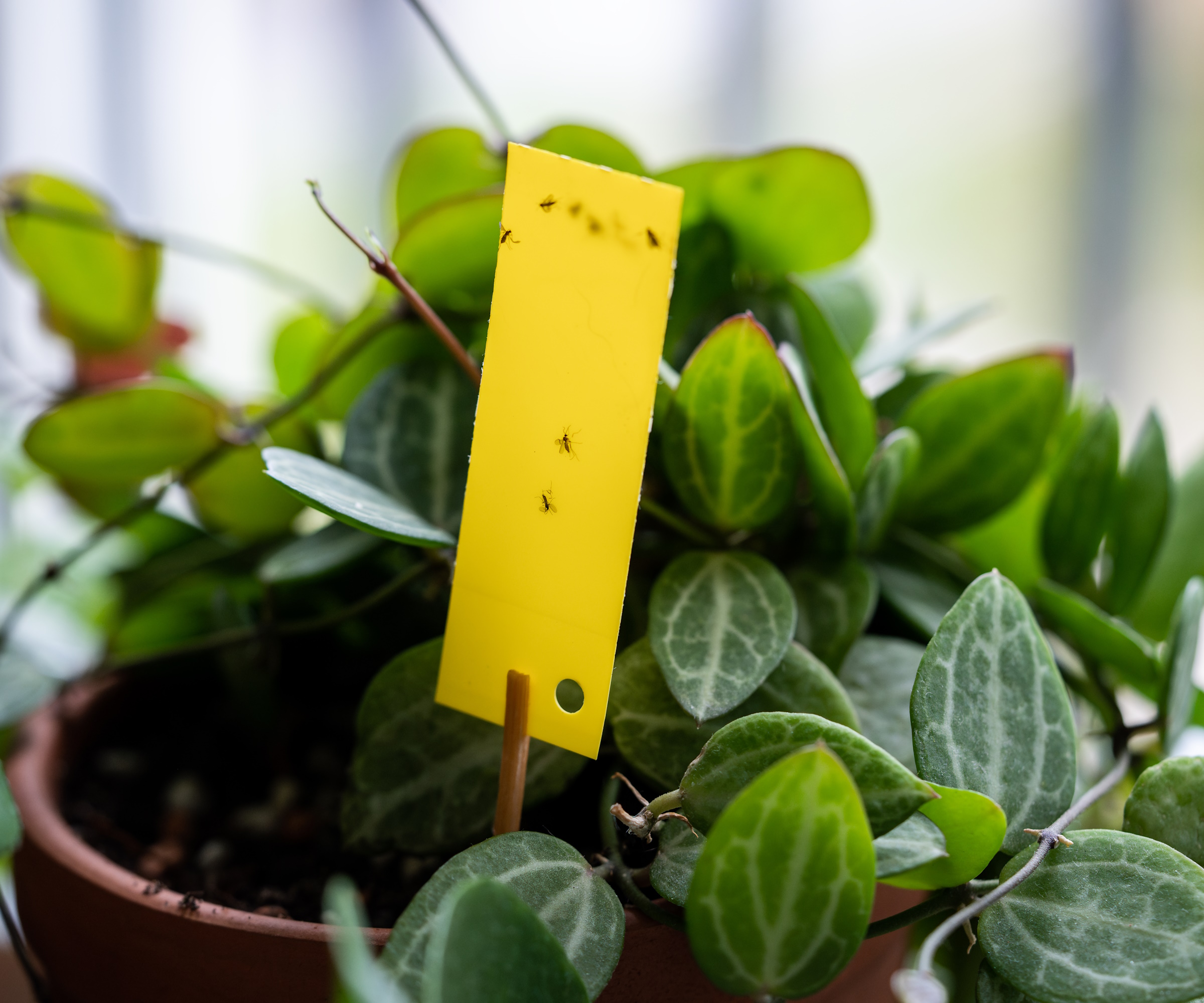
If you have done your research into fungus gnats, you'll know that amending the moisture levels in your soil isn't enough to handle the adults that are already flying around. Adult gnats need to be captured in order to get rid of gnats once and for all, so that they don't lay any more eggs in your soil.
These sticky fly traps from Amazon helped me to rid my indoor garden of gnats. They're simple to use - just place them in your plant pot and it will capture flying gnats.
'Since gnats are attracted to yellow color, they fly towards the sticky traps and get stuck,' explains Vladan.
Depending on how severe your infestation is, you may find you need to swap out your sticky fly traps with news ones a few times. Just take care to not get them stuck to the foliage of your plants, as it could rip leaves and cause damage.
These traps will also help with other pests and can be used outdoors, too. Going forward, it can be a good idea to pop these fly traps in plants as soon as you spot gnats to prevent an infestation developing.
FAQs
How long does it take to get rid of a gnat infestation?
Fungus gnats have a lifespan of one to two weeks, so it is recommend to persistently tackle a gnat infestation for up to two months to get rid of the problem entirely. This means not only capturing the adult gnats that are flying around, but also tackling the larvae and eggs in the soil that are yet to hatch. Maintain an uninhabitable environment in your plant's soil for a few weeks at a time and you should see your gnat problem disappear.
Can I use insecticides to get rid of gnats?
Yes, you can use insecticides to get rid of gnats. However, be aware that some of these products contain chemicals that many are hesitant to release into their plant's soil. Some products that experts recommend include neem oil spray, like this neem oil from Amazon, and mosquito bits, like these mosquito bits from Amazon.
'Mosquito bits are pellets made of corn cob. They contain the bacteria Bacillus Thurigiensis israelensis (BTI), which is effective against fungus gnats,' notes Vladan Nikolic from Mr. Houseplant. 'Put Mosquito bits in water that you use to water your plants. Mix 4 tablespoons of mosquito bits per half a gallon of water. Leave them in for about 30 minutes so BTI can separate from corn cobs and be released into the water. Gnat larvae will eat BTI and die,' he adds.
We recommend always researching insecticides before use and following manufacturer instructions.
After around six weeks of consistently tackling my gnat infestation, there wasn't a gnat to be seen. I have since continued to provide my houseplants with this optimal care and they look healthier than ever. It's all about observing your specific plant and seeing what kind of care it needs in the environment it's growing in.
If you're struggling to tackle a gnat infestation, try one of these DIY gnat traps to help eliminate them from your home.







